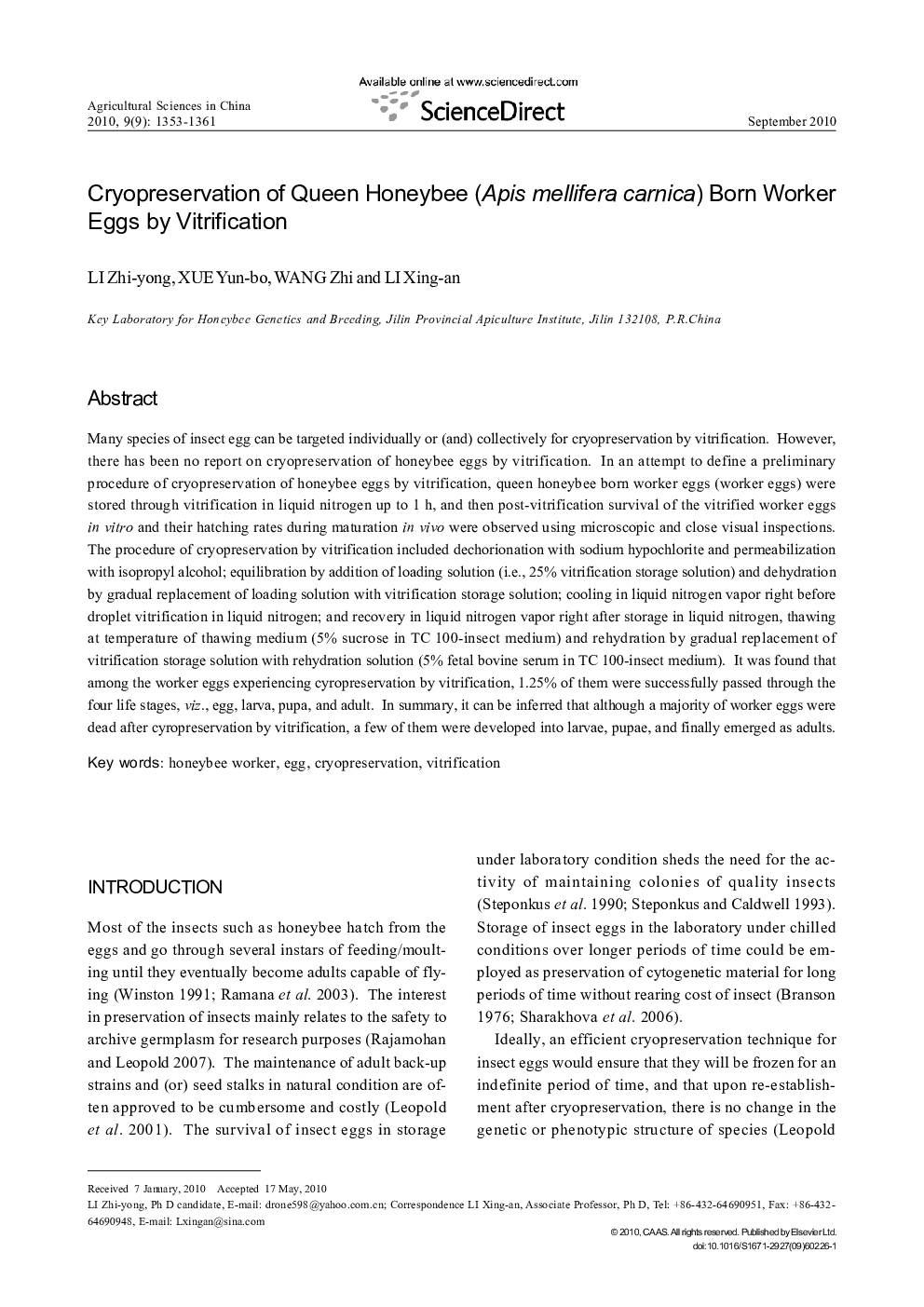| کد مقاله | کد نشریه | سال انتشار | مقاله انگلیسی | نسخه تمام متن |
|---|---|---|---|---|
| 4490071 | 1317751 | 2010 | 9 صفحه PDF | دانلود رایگان |

Many species of insect egg can be targeted individually or (and) collectively for cryopreservation by vitrification. However, there has been no report on cryopreservation of honeybee eggs by vitrification. In an attempt to define a preliminary procedure of cryopreservation of honeybee eggs by vitrification, queen honeybee born worker eggs (worker eggs) were stored through vitrification in liquid nitrogen up to 1 h, and then post-vitrification survival of the vitrified worker eggs in vitro and their hatching rates during maturation in vivo were observed using microscopic and close visual inspections. The procedure of cryopreservation by vitrification included dechorionation with sodium hypochlorite and permeabilization with isopropyl alcohol; equilibration by addition of loading solution (i.e., 25% vitrification storage solution) and dehydration by gradual replacement of loading solution with vitrification storage solution; cooling in liquid nitrogen vapor right before droplet vitrification in liquid nitrogen; and recovery in liquid nitrogen vapor right after storage in liquid nitrogen, thawing at temperature of thawing medium (5% sucrose in TC 100-insect medium) and rehydration by gradual replacement of vitrification storage solution with rehydration solution (5% fetal bovine serum in TC 100-insect medium). It was found that among the worker eggs experiencing cyropreservation by vitrification, 1.25% of them were successfully passed through the four life stages, viz., egg, larva, pupa, and adult. In summary, it can be inferred that although a majority of worker eggs were dead after cyropreservation by vitrification, a few of them were developed into larvae, pupae, and finally emerged as adults.
Journal: Agricultural Sciences in China - Volume 9, Issue 9, September 2010, Pages 1353-1361